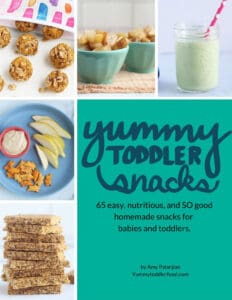If you struggle with feeding a picky eater, whether they’re a toddler or an older child, these simple steps can help you reset the balance in your house to make happier mealtimes possible. I know that so many families struggle with this, so it’s my hope that these simple tips help you take a deep breath in the challenge of feeding your family!
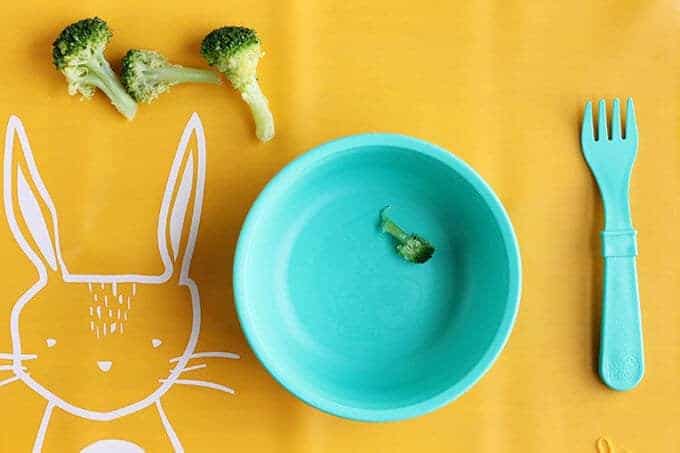 Picky Eaters
Picky Eaters
The term “picky eater” is so loaded and it often means different things to different people. For this post, I’m simply using the term to help any parent who thinks they have a picky eater—and finds that pickiness to be a problem—improve the situation. Stress over what our kids eat can take the joy out of mealtimes, when we should be using the time to connect with our families.
And it can often feel so demoralizing to feel like we’re failing our kids. It is my sincere hope that this post helps improve that for you if it’s happening in your house.
**Remember: If you have a serious feeding challenge or concern about your child, this post is not to be used as a substitute for medical advice. Always reach our to your pediatrician or a professional feeding therapist for help.**
Picky Eaters: Toddlers
One of the most reassuring things (I hope!) that you should know about feeding toddlers is that there is a very NORMAL phase of picky eating that often kicks in between the ages of 1 and 2, and lasts until about age 6. Again, I cannot reiterate enough that this is NORMAL. If you know that this is happening with most toddlers and can control your reaction to it using some of the other tips below, you are well on your way to not letting picky eating spiral out of control in your house.
Getting Kids to Eat
One of the most common types of questions that I hear about feeding little kids is: “How can I get my toddler to eat _______?”. And while I totally understand that it’s concerning if your child isn’t at all interested in entire food groups, I want to remind you all that if you go into meals with the mindset of “getting” your child to eat certain foods, it will likely stress you out!
Instead, if you can keep the feeding method called the Division of Responsibility in mind and focus on serving a range of healthy foods and letting your child decide what of it and how much to eat, you are more likely to have a happy mealtime.
To help you even more with that, here are my top tips to help picky eating.
 Picky Eating Tip #1: Lower Your Expectations
Picky Eating Tip #1: Lower Your Expectations
I’ve always found it helpful to remember that kids have a relatively shallow depth of memory when it comes to food—which is to say, they simply don’t have the taste and flavor memories that we adults do. This can make it:
- Hard to predict what an unfamiliar food will taste like.
- Easy for kids to refuse food based on how they look.
- Easy for kids to be wary of foods that are mixed together since they don’t know what the combined flavor or texture might be.
- Hard to remember what something they ate a few weeks ago might taste like.
If you feel like your toddler doesn’t often want to try new foods, you’re not imagining it—they might not and for good reason! There’s no perfect solution to this other than continually exposing your kids to the foods that you want them to eat, and that you eat as a family. AND remembering that it may take time for some little eaters to work up the courage to try the foods.
If you can lower your expectations both for the range of foods and the amount of each food that you think your child should be eating, you are well on your way to helping your picky eater feel less pressure.
Picky Eaters Tip #2: Remember Portion Sizes Can be Small
Toddlers and little kids often don’t need to eat as much as we think they do—or should. So when we put a large portion onto their plate and they eat some of it, but not all, it looks like they didn’t eat enough. But they may have eaten plenty! Depending on age, a toddler portion size for veggies might be 1-2 tablespoons to ¼ cup. That’s really not a lot and it can help to keep in mind that we often overestimate how much our kids need to be eating of certain foods.
And keep that in mind for protein too: Little kids only need 2-3 servings of protein a day and those portion sizes are small. There’s no need to push and push if they are actually getting enough!
(It’s okay if your kiddo eats more than this—there’s a large range of “normal!”)
Picky Eaters Tip #3: Space out Meals and Snacks
I recently read a statistic that we’re all eating about 200 calories more a day than we did in the 1970s simply due to snacking more. And often, those snacks are fairly close together.
Ideally, a child should have 2-3 hours between a meal or snack to give them time to work up an appetite.
That can often be difficult due to schedules, but if there’s snack grazing or unstructured meal times, try paying a little more attention to the timing of meals and snacks with a set routine and see if that helps your child be a little hungrier when they sit down at the table.
P.S. If you have a kiddo who won’t sit down for meals, and you consider them to be picky, I strongly suggest that you make that a routine. No meal or snack unless they sit down. Toddlers are remarkably quick to adapt so if you stick with that, they’ll get on board because they’ll have no other choice!
Picky Eating Tip #4: Serve Water Between Meals
This often seems like too basic of advice, but if your child is drinking milk or juice between meals, they simply might not be hungry enough for actual food. Try sticking with water between meals and milk at meals to help even this out. (And I say this as a mom to a toddler who LOVES her milk and would happily fill up on it at every meal and snack time. She only gets it at her main meals and she’s learned that sometimes we drink water!)
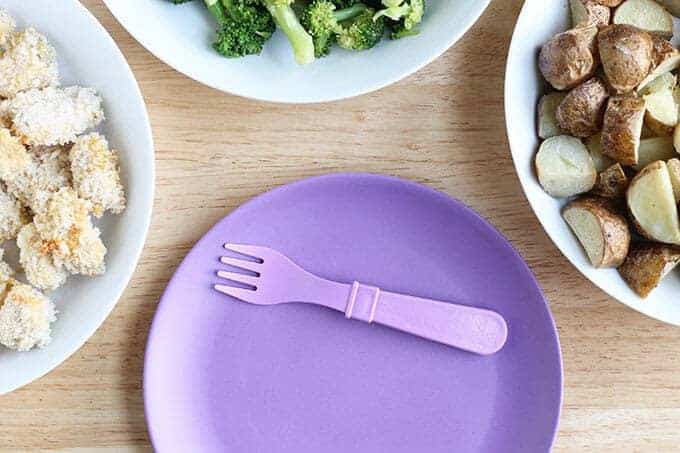 Picky Eaters Tip #5: Serve Meals Family Style
Picky Eaters Tip #5: Serve Meals Family Style
Putting the foods available for each meal and encouraging kids to serve themselves gives them power and authority over their plates—which can go a long way towards helping to reset any power struggles. Kids as young as 1 and 2 can help do this (obviously help them as needed) and it can help reduce how much you get up and down from the table.
I like this approach because it allows kids to see what’s on offer and they can choose what they want to eat and how much. We encourage sharing before anyone takes seconds and when a food runs out, they can try something else if they’re still hungry.
I also like that I can put the foods into dishwasher-safe bowls or plates and wash the pots and pans before sitting down to the table…so clean up is just a matter of getting everything into the dishwasher!
Picky Eaters Tip #6: Resist Forcing Bites and Commenting on Intake
Often, and with the best of intentions, we focus on counting bites or wanting the kids to eat a certain amount of one food before they can have another or be excused. This can create some power struggles, sure, but my main reason for recommending that we try to avoid it is that it disconnects our kids from being able to trust their own hunger. We can’t ever know how their bellies feel and if we regularly tell them to eat more or less than they need, they won’t grow up being able to trust themselves to eat as much as is right for their bodies.
When it comes right down to it, forcing a certain number of bites of bites is really quite arbitrary and can be pretty confusing for kids if parents and other care givers have different amounts that they need to eat.
I like to encourage kids to try a range of foods by comparing foods to other things they like, talking about what they taste like, and eating them myself. And when it comes to vegetables for kids, make sure that they taste really good!
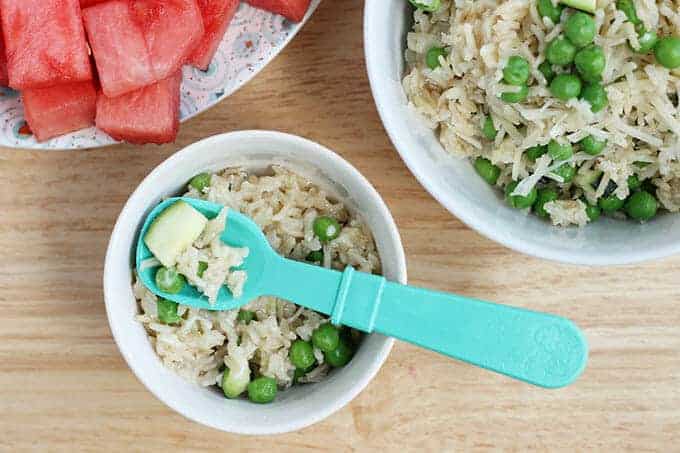 Picky Eating Tip #7: Don’t Get Up to Prepare Another Meal
Picky Eating Tip #7: Don’t Get Up to Prepare Another Meal
Okay, I 100% realize that when a kid refuses to eat, it’s stressful. Of course! And we want them to eat because we all need to eat to thrive. But, and this is a big but:
*If you regularly get up to make them a meal that they prefer, they will expect that and only eat their preferred foods.*
This is really not a great habit to get into regularly because it’s so self-fulfilling. Instead, I suggest aiming to include 1-2 foods in each meal that your child usually likes so there’s always something “safe” that they can eat. You can also involve your child in meal planning by letting them choose between two options. Like, broccoli or corn. Pasta or pizza. Chicken or meatballs. Marinara sauce or pesto. If you can get them to buy into a meal before they actually see it, they might be more inclined to eat it.
I also like to think of the goal of buying the foods that I want my kids to eat. The food kids eat at home is often the food that has the biggest impact, so keep that in mind and buy more of the foods that you want your family to be eating!
Picky Eaters Tip #8: Consider Your Reaction
The next time your toddler doesn’t eat something, ask yourself why you’re upset about it—what is it that you’re afraid of? Are you worried they’ll wake up in the middle of the night hungry? (Have they actually ever done that?) Are you worried they simply aren’t eating enough? Knowing the reason behind your worry can help you figure out if you really need to worry so much to begin with.
And watch how you react. If your toddler doesn’t eat their dinner because they know you will always get them a snack afterwards, that might be a simple thing to adjust. If you follow your kiddo around with food forcing in bites when they don’t eat much when they’re at the highchair, food might have become a source of stress for them.
The more that you can relax about what your child eats and assume that they aren’t hungry when they don’t eat, not that they are picky, the better off everyone will be.
Picky Eaters Tip #9: Encourage Enthusiasm
As soon as my oldest kiddo was being fed more outside of our home at daycare and school, I realized that one thing I could do to help myself feel okay with the range of foods she was eating was to share her enthusiasm. This is another way of saying that it’s okay if your child loves certain foods! It’s okay to be excited about their food enjoyment with them!
This can make mealtimes happier and it can help remind you that there are foods that your kiddo truly loves—just like you likely have foods that you love too.
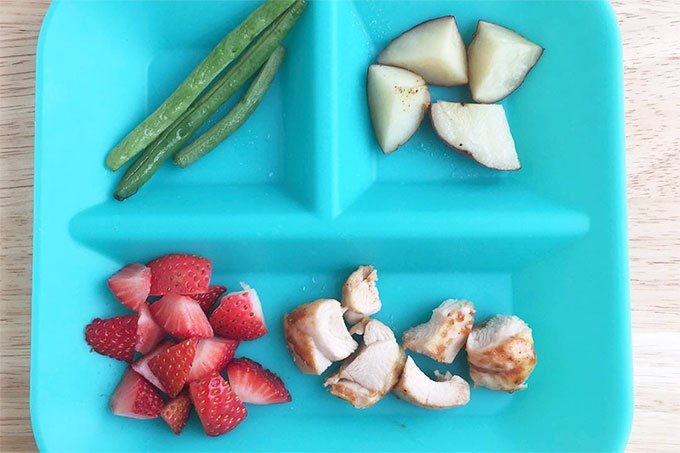 Picky Eaters Tip #10: Try to Avoid Comparing Your Toddler to Others
Picky Eaters Tip #10: Try to Avoid Comparing Your Toddler to Others
Every single person, child or adult, eats differently. And avoiding the comparison game is much harder now that we have social media in our lives and we see kid food so much more often. But if you can step back and remember that those images are not the full story—and that it’s okay if your toddler doesn’t have a perfect diet because that doesn’t exist!—you’ll likely feel much less stressed about what they are, and are not, eating.
Picky Eating Tip #11: Remember that It’s Okay to Have Likes and Dislikes
Whenever my oldest sits down at the table and is sad about the meal she finds, I often remind her that “not every meal will be your favorite”. And then I remind her of when we recently had a meal that she loved and when the next meal she loves is coming up.
If you think about it, this is likely the way it works in your life too—we all naturally have our preferences, which is okay, but it’s also a good life lesson to realize that we can’t always have them 100% of the time. (And the world won’t end!)
Picky Eaters Tip #12: Focus on Everything But the Food
Distract, distract, distract. If a kiddo is unhappy about something related to dinner, ask them a very specific question about a friend at school. If they are complaining before they sit down at the table, grab them for an impromptu dance party. Challenge them to tell a joke. Get them to tell you the funniest thing that happened at school. Ask them which super hero they’d want to be Anything but the food!
I can’t tell you how many times I’ve done this in the moment and it’s totally transformed our meal. Kids are likely to eat better if they are talking or focused on something that they are really interested in, so use that to your advantage!
This is also a great way to help YOU disengage from counting bites or being super invested in what they do and don’t eat—which can make a meal so much happier for everyone!
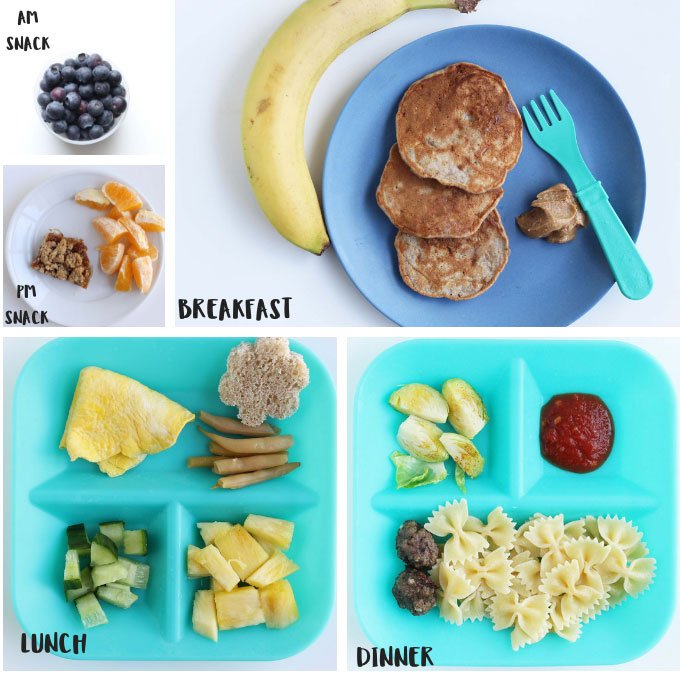 Picky Eating Tip #13: Serve a Variety of Food—No Matter What
Picky Eating Tip #13: Serve a Variety of Food—No Matter What
One of the best ways to ensure that your toddler doesn’t wind up only eating three foods is to serve them more than just those three foods. This can seem difficult if you currently have a child who refuses everything but their favorites, but here are a few tips for how to do this:
- Aim to serve a variety of foods from all food groups over the course of the week.
- Try to not serve the same foods two days in a row for the same meal.
- Buy two items of produce each week that you didn’t buy the week before.
- Include 1-2 foods they usually eat as part of each meal, but don’t stop exposing them to new foods.
If you keep portion sizes small and avoid pressuring the kids to eat a certain amount of anything, you may be surprised at what they’re willing to try.
Picky Eaters Tip #14: Remember that Eating Phases Come and Go
Whatever weird phase your child is in, it won’t last forever. I promise! Usually normal pickiness lets up a bit around age 5 or 6—my oldest suddenly started eating foods mixed together when she turned 6 and is much more willing to try small bites of new foods than she ever was at 3 or 4. If you can think back to the foods you ate and loved as a child, it’s likely different than how you eat now. It’s all good!
As I am sure that you’ve discovered, kids grow up SO darn fast. This phase, while wildly frustrating at times, is fleeting and will in all likelihood eventually improve. Hang in there!
Picky Eating Tip #15: Have Compassion
As you try these tips, remember to also have compassion. And I mean this both for yourself and with your child. This is often a very emotionally loaded topic for all of us and can be super stressful. If you feel like your own eating issues are getting in the way of feeding your child or you want more resources to look into for help, these are my favorite best books for parents of picky eaters.
And remember that there are so many awesome feeding therapists out in the world who are ready to help you!



